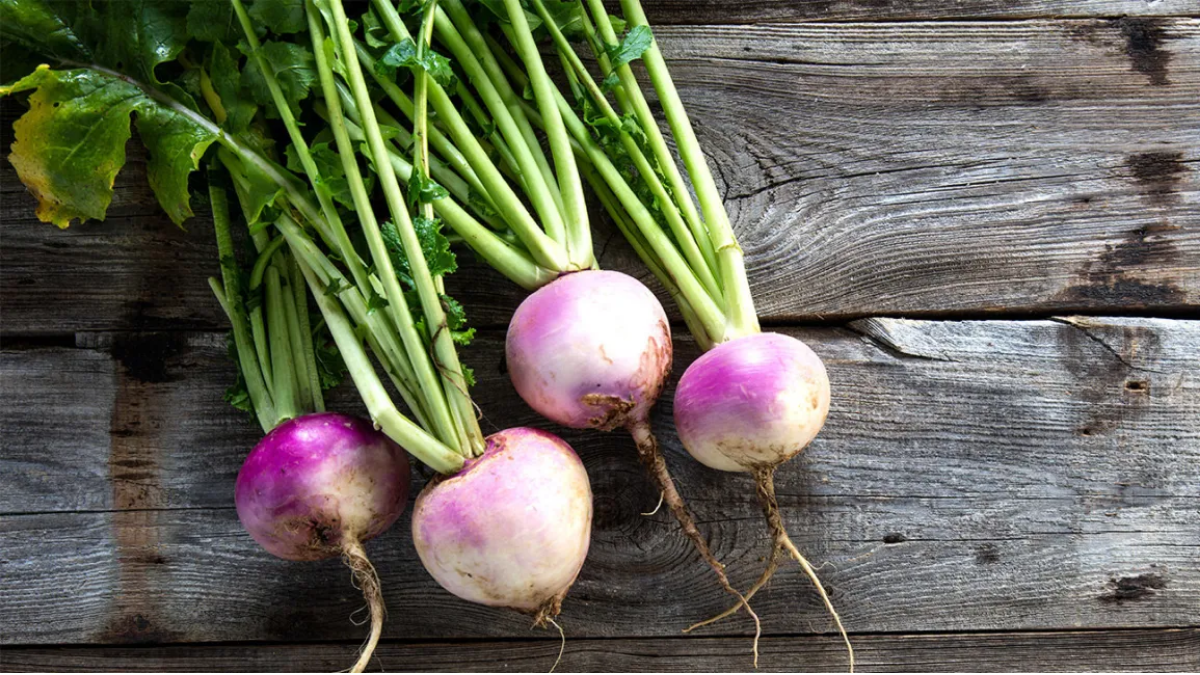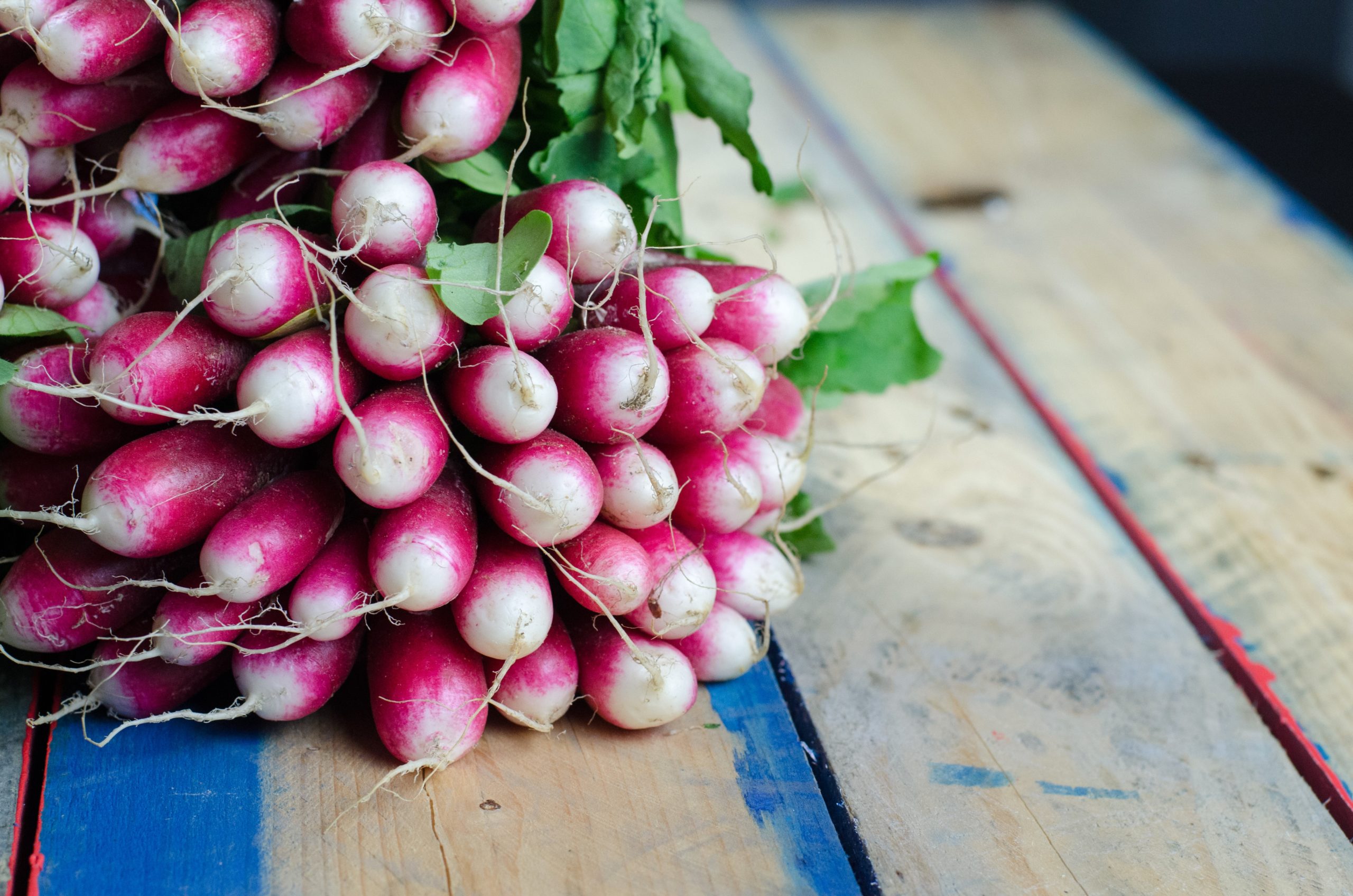Turnip leaves are delicious twice-cooked and have a mildly peppery warmth reminiscent of mustard greens. In this article, you will know how to boil turnips. They are also known as tops or greens. The turnips themselves are surprisingly adaptable, crisp, and bittersweet. They taste great in soup, risotto, and pickles. Turnips also have a long history in Italy, where they were a staple diet for the ancient Romans and one of the first vegetables to be domesticated there.
According to legend, the Roman combat hero Curius Dentatus turned down a substantial sum of wealth to join the Hostile Samnites at the beginning of the third century because he was engaged in cooking turnips over a fire. Learning how to boil turnips is one of the best ways to get the full taste of this versatile root vegetable. In addition to retaining most of their juices, boiling turnips can help prevent the loss of essential vitamins.
Follow the Below Instructions to Boil Turnips Easily
Turnip Boiling Techniques
-
Use a sharp knife to trim the stems and tails, leaving just about 1 inch of stem attached to the bulb. You can use the greens or remove them depending on your tastes and leave them on for the most significant nutritional benefits.
-
Select a big saucepan to hold all the turnips you plan to boil, add tap water, and set it on the stovetop heat. Use the highest heat setting to bring the water to a boil. The water is boiling when bubbles start to appear above the surface.
-
Please ensure the turnips are well submerged in the water before adding them.
-
Add one complete potato to the water if your turnips are very large. Larger turnips typically have a bitter flavor, so adding starchy food, like a potato, will help mask that flavor.
-
Keep a close eye on the pot to prevent overboiling or water overflow as you simmer the turnips for 25 to 30 minutes with the cover on. When the turnips are fork-tender, they should be finished.
-
Turnips should be drained in a strainer and seasoned to taste with salt and pepper. You can consume or toss the potato you used to soak off the bitterness.
Remove Bitterness from Turnips
The easiest way to remove the bitterness from turnips is by boiling them. This method removes the bitter taste of turnips without cooking them too long. However, it takes a considerable amount of time to cook turnips.
Fortunately, this method is also effective for other root vegetables. Boiling turnips in salted water make them less bitter and softer. Cooking turnips until they are soft and mushy will also help remove the bitterness. It would be best if you started by choosing large turnips at least three inches in diameter for the best results.
When selecting turnips, feel the skin to see if it is smooth and firm. You also want to look for a mild flavor from the flesh of the turnip. Avoid buying turnips with blemishes or cracks. Otherwise, they will have a lilac-purple tinge and may be too large.
Tips for Choosing Turnips
There are several factors to consider when picking turnips for boiling. While the skin is edible, it does have a strong, bitter flavor. This is one reason why most people peel them before using them. The taste of turnips is between radish and cabbage but sweeter than the latter.
While turnips have health benefits, they can be challenging to prepare and cook. They can be boiled, roasted, blanched, or even eaten raw. It would help if you avoided larger turnips, as these tend to be tough and have an unpleasant taste. Instead, opt for a smooth variety that has fewer imperfections.
Some Essential Tips to Keep in Mind:
-
Choose smooth turnips, free of cracks or blemishes, sturdy and weighty for their size. Avoid large turnips since they will be fibrous and bitter.
-
Look for turnips with a diameter of no more than 3 inches (7.5 cm). The leaves should be crisp and deep green if they are attached.
-
Turnips typically have white flesh. Turnips with yellow flesh, when cut open, are most likely rutabagas. Rutabagas resemble turnips but are more extensive, rounder, denser, and sweeter.
-
Tokyo turnips, also known as Tokyo-type or Kotaku-type turnips, are all-white, radish-sized root vegetables. The flavor of the Tokyo turnip is delicate and buttery.
- Lastly, choose one with a mild flavor and low-carb content.
Benefits of Turnips
The season for turnips runs from October through March. Those are the advantages of turnips, and they are in great numbers! The following list of health advantages should persuade you that you should consume mashed turnips in your regular diet:
-
Vitamin K is abundant and has an anti-inflammatory effect.
-
Vitamins C, E, and beta-carotene are excellent antioxidants and help prevent various diseases.
-
Turnips provide 36 calories and 3 grams of fiber per cup when cooked.
-
It contains a lot of potassium, which lowers blood pressure. Excellent source of calcium, excellent for bone health
-
Excellent for weight loss, treating some renal diseases, and preventing hunger
-
And a lot more, like skin, eyes, and aging benefits!
How to Store Turnips?
After boiling, you can store turnips in an airtight container. Choose smooth turnips, free of cracks or blemishes, firm, and weighty for their size. The process is similar to that for potatoes. Could you place them in the box, top side down? Lightly cover the bottoms of the turnips with sand to keep them from touching each other. It is best to store turnips indoors if possible.
Keep in mind that turnips need cool temperatures to survive. Please keep them in the refrigerator in a perforated plastic bag for one to three weeks. If you want to use turnips for over a few months, you should store them indoors. Remove any turnip leaves or greens and store them separately in a perforated plastic bag.
In the refrigerator, turnip greens will last for four to five days. Turnips should be blanched for a few minutes or cooked and then puréed before freezing. To determine whether a turnip is still edible, you should squeeze its outer skin. If the turnip is slimy or soft on the outside, you should discard it.
If the turnip looks or smells dried, it is probably wrong. You don’t want to risk cooking it and getting the smell. In addition, a turnip that is dry or cracked can spoil faster.
Some Serving Ideas for Turnips
-
You can eat turnips raw, baked, cooked, or mashed. Carrots and turnips can be prepared similarly.
-
Raw turnips can be shredded or sliced and added to salads.
-
Radishes can be swapped out for little turnips.
-
When steamed or cooked, turnips can be served with butter or cream.
-
Turnips can be cooked around a roast or used in soups or stews.
-
Young turnips can be sliced or uncooked to give salads a sharp texture.
-
The French pick young turnips, who then braise, fry, and glaze them.
How to Get Turnips Ready for the Kitchen?
-
Trim the top and bottom, and peel the turnips if required before washing them in cool water. Young turnips don’t require peeling, while older turnips will have tough skin that is best removed.
-
Turnips absorb fat quickly, so fried turnips will be high in calories. Turnips take longer to cook than carrots; allow 10-15 minutes when boiling, and a little longer when steaming.
Turnip Roasting Techniques and Simple Recipe for Roasted Turnips
If you’re looking for a simple way to add roasted turnips to your meal, you’ve come to the right place. This recipe is easy to follow and will make your roasted turnips a mainstay of your menu. This recipe can be used for various recipes, including salads, stir-fries, and sandwiches. And the best part? It only takes a few minutes to prepare. The ingredients are straightforward, and you’ll be amazed by the delicious results!
1. Roast turnips with or without the skin. Thick wedges of giant turnips should be cut.
2. Microwave-prepare cut turnips for 4 minutes or until soft but firm. Or, cook for about 10 minutes in salted water until fork-tender.
3. Set the oven’s temperature to 450 F.
4. Arrange the wedges on a baking sheet or pan, drizzle with olive oil, and toss to combine. The pieces and the pan should have an even layer of light, evenly distributed oil.
5. Add salt, dry herbs, or spices for seasoning.
6. Roast the vegetables for 20 to 30 minutes until the bottoms are browned and a spatula slides under them easily.
This simple recipe for roasted turnips is sure to be a family favorite! Just remember to eat them with a spoonful of butter!
Turnip Microwave Instructions
Turnip Stir-Fry Techniques
Turnip Mash Techniques
Is Steaming or Boiling Turnips Preferable?
The nutritious worth of your meal is also preserved by steaming. When foods are boiled, water-soluble vitamins, such as vitamin C, dissolve into the cooking water and are frequently lost. Turnips can be cooked healthy for optimum nutritional value by steaming them. Additional fats, which would otherwise raise your calorie intake and maybe also your saturated fat information, are unnecessary when burning. The nutritious worth of your meal is also preserved by steaming. When foods are boiled, water-soluble vitamins, such as vitamin C, dissolve into the cooking water and are frequently lost.
How Long Should Turnips be Boiled?
Add a pinch of salt and some water to a pot with a whole or sliced turnip, or place it in a steamer above the water. A teaspoon of sugar can be added to give it a slight sweetness. Turnips should be cooked until soft, which takes 10 minutes to cut pieces and 35 minutes for whole turnips.
Can Turnips be Cooked without Being Peeled?
The question is whether to peel or not to peel. It is entirely up to you whether or not to peel your turnips. It is suggested that the skin be removed to eliminate a strong flavor when eating larger bulbs. If you peel the turnips, use a vegetable peeler to complete the task, just as you would with a potato.
Are Turnips Nutritious?
A cruciferous vegetable with numerous health advantages is turnips. They have an outstanding nutritional profile, and bioactive components like glucosinolates may help regulate blood sugar, guard against dangerous microorganisms, and have anti-inflammatory and anti-cancer properties.
Which Meat Pairs Well with Turnips?
In essence, turnips go nicely with any meat or seafood. They have a mildly bitter flavor, which you can lessen by adding salt to the cooking process. Whether you prepare turnip greens or the plant’s roots hold.
Conclusion
In this article, you have learned how to boil turnips. Turnips can be prepared in various ways, as you’ve seen above. You can roast turnips, braise them in butter, purée them with potatoes and other vegetables, glaze them, or frame them in a gratin. Larger, more mature turnips can have the crisp flavor of an apple or offer the tart taste of cabbage, mustard, or radish.
We hope this post taught you something about turnips you didn’t know before! Small, young turnips are delicate and slightly sweet. Harvesting of turnips occurs f

